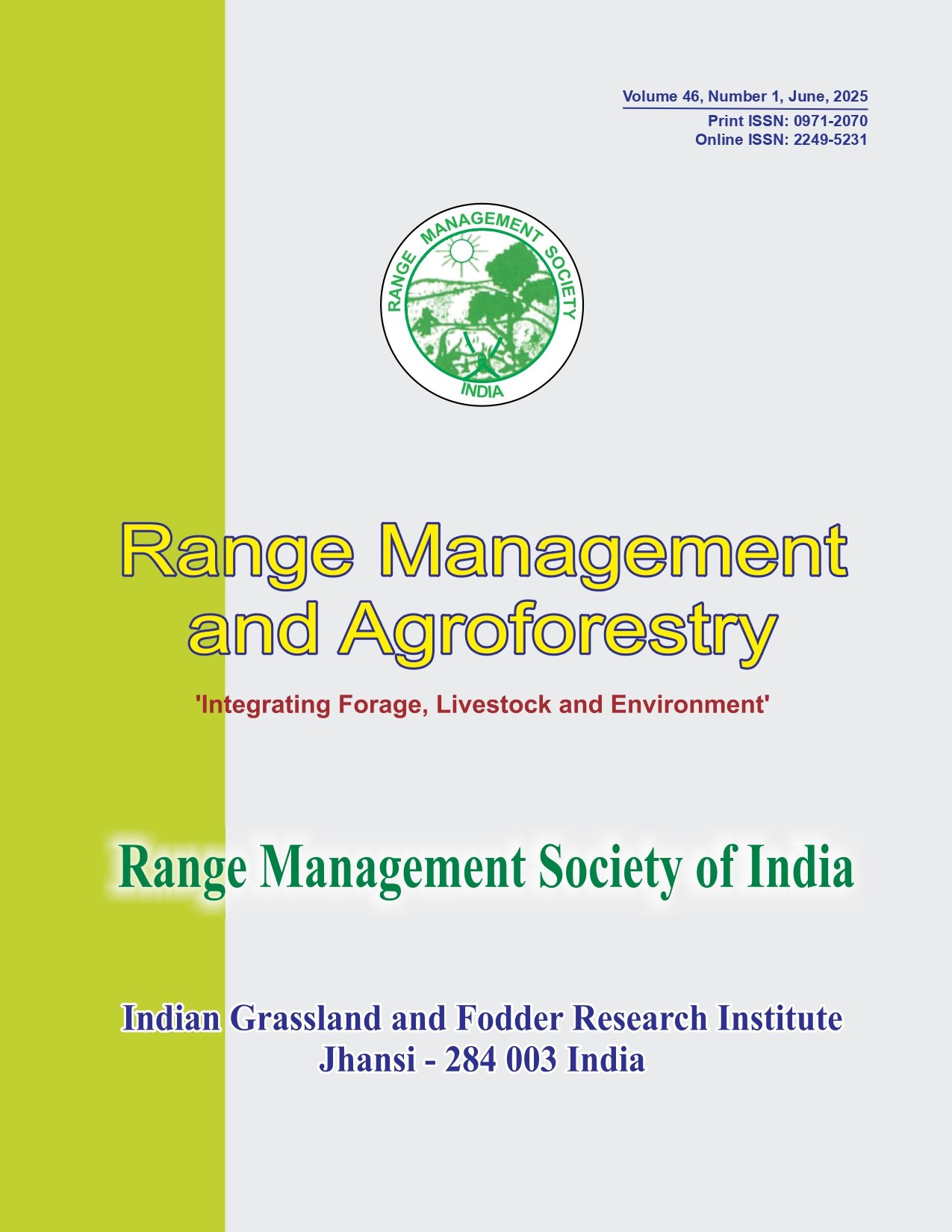Growth and biomass production of fodder trees and grasses in a silvipasture system on non-arable land of semi-arid India
Keywords:
Biomass, Degraded land, Fodder tree, Grass, Legumes, SilvipastureAbstract
Silvipasture experiment was conducted for five years (2010-11 to 2014-15) to find out the suitable tree grass combination for biomass production under rainfed condition of semi arid region of India. The treatments comprised of four fodder trees namely Ficus infectoria, Madhuca latifolia, Morus alba, Acacia nilotica; three grass species viz., Cenchrus ciliaris, Chrysopogon fulvus, Panicum maximum and two legumes Clitoria ternatea and Stylosanthes seabrana. The results showed maximum tree height (369.5 cm) and collar diameter (8.03 cm) in A. nilotica. The survival percentage is also higher (93%) in A. nilotica compared to others. Even though the total tree pruned biomass over five years was higher in M. alba, the A. nilotica produced maximum biomass in fifth year. The leaf fodder percentage in pruned biomass which indicates quality of forage is maximum (22.5%) in M. latifolia and minimum in A. nilotica. Among the grass species P. maximum produced higher biomass during five years followed by C. fulvus. Among legume species maximum forage biomass was recorded in S. seabrana due to enhanced biomass in the last three years compared to C. ternatea.




